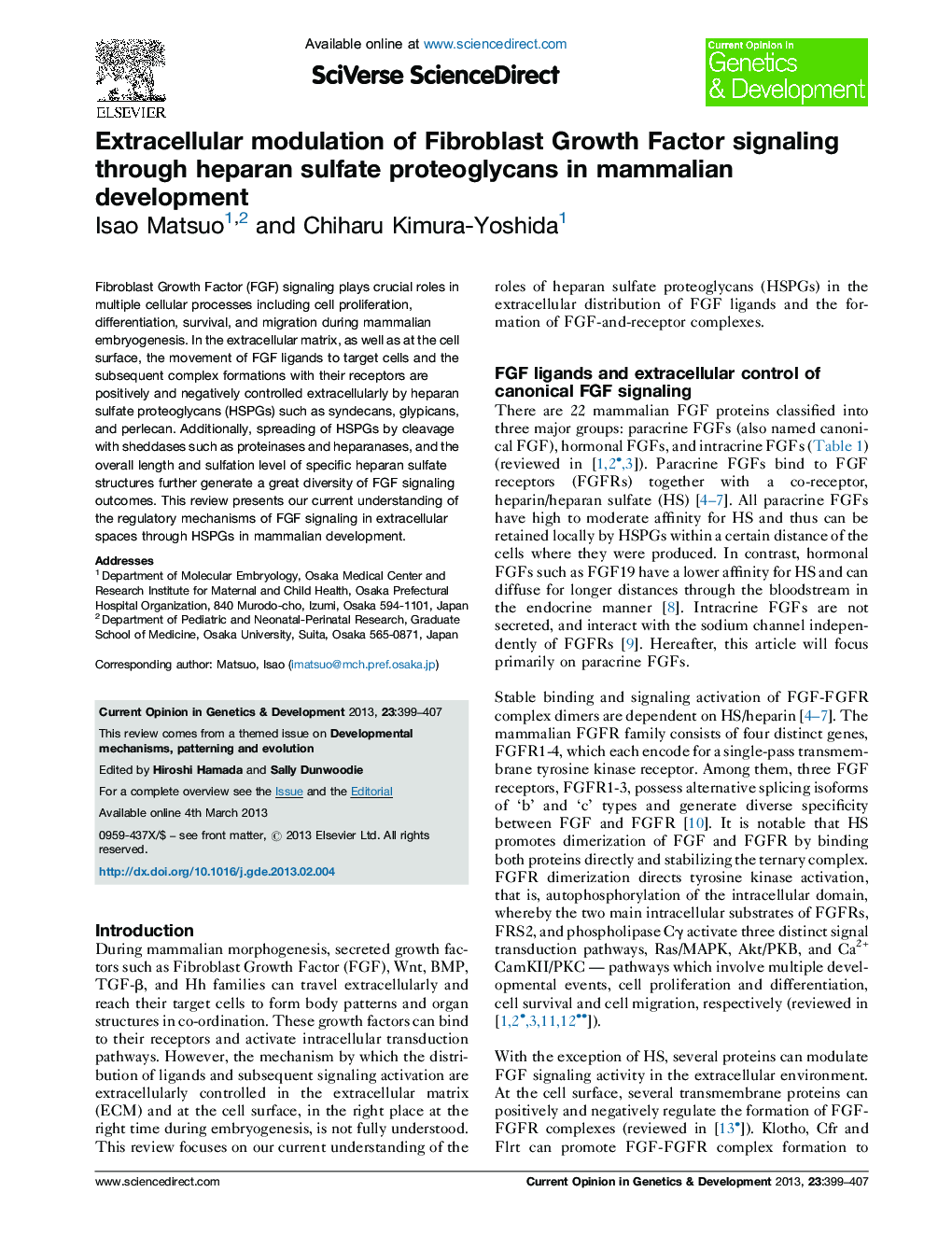| Article ID | Journal | Published Year | Pages | File Type |
|---|---|---|---|---|
| 2784836 | Current Opinion in Genetics & Development | 2013 | 9 Pages |
Fibroblast Growth Factor (FGF) signaling plays crucial roles in multiple cellular processes including cell proliferation, differentiation, survival, and migration during mammalian embryogenesis. In the extracellular matrix, as well as at the cell surface, the movement of FGF ligands to target cells and the subsequent complex formations with their receptors are positively and negatively controlled extracellularly by heparan sulfate proteoglycans (HSPGs) such as syndecans, glypicans, and perlecan. Additionally, spreading of HSPGs by cleavage with sheddases such as proteinases and heparanases, and the overall length and sulfation level of specific heparan sulfate structures further generate a great diversity of FGF signaling outcomes. This review presents our current understanding of the regulatory mechanisms of FGF signaling in extracellular spaces through HSPGs in mammalian development.
